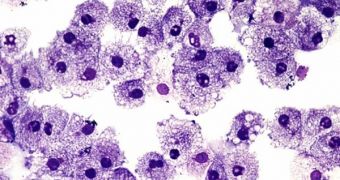Undoubtedly, the number one spot for this year's Top Scientific achievement is the discovering of cellular reprogramming techniques, which offer experts an invaluable tool in studying, understanding, and, potentially, curing such diseases as Parkinson's and diabetes. Sick cells can now be programmed into viable stem cells, which are then used to create healthy tissues. Further advancements in this area could see the construction of artificial organs in the lab, from the patients’ own, artificially-grown cells.
The runner-up to the number one spot is the detection of exoplanets for the first time, as astronomers learned how to use complicated space telescopes to distinguish between the faint light that planets give off and the massive light of the stars they orbit. Observing these planets may open up new ways of understanding how orbits work in other solar systems as well.
The next scientific discoveries are listed in a random order, which does not represent their importance.
Genome sequencing, a technique that, until now, lasted a long time and required a large amount of resources to complete, has now become readily available, at a very low price, and in very little time. Advancements even led to Japanese scientists saying they wanted to clone a mammoth.
The latest breakthroughs in particle physics now allow experts to safely say that the Standard Model was accurate, and that they can now accurately calculate the mass of protons and neutrons composing our entire Universe.
A new approach to fighting obesity uses “good” brown fat to burn “bad” white fat and turn it into energy for the organism. This solution addresses an increasingly larger portion of the world's population, currently suffering from weight disorders, including 66 percent of Americans.
The fight against cancer also took off this year, with the discovery of dozens of genes involved in taking the “brakes” off cellular division and life span, which unavoidably sends the cells on the path to cancer, and death for the human host.
This year also saw the direct observation of the multiplication process that a zebra fish embryo went through in its first 24 hours of existence, as researchers followed the division until 16,000 cells were observed.
A new class of high-temperature superconductors was also discovered in 2008, as scientists figured out how to make them from iron, instead of copper and oxygen. These instruments will further lower the resistance current meets while traveling long distances.
The proteins regulating the immune system and their direct action in the tissues they serve were also observed for the first time, as scientists watched in awe how the small compounds bound to their targets and change the way cells work.
Cobalt-phosphorus catalysts were invented as a way of storing energy produced by inconstant sources, such as wind and the sun. These devices break off water into hydrogen and oxygen, which then fuels the electricity-generating machines again.

 14 DAY TRIAL //
14 DAY TRIAL //